
Comprehensive guide designed to support educators in introducing digital wellbeing to students to help them balance and enjoy their digital lives.
- Subject:
- Media and Communications
- Material Type:
- Unit of Study
- Provider:
- Date Added:
- 10/04/2023

Comprehensive guide designed to support educators in introducing digital wellbeing to students to help them balance and enjoy their digital lives.

Students in Grades 2-6 use digital dictionaries and other e-book tools to learn new vocabulary as they read e-books on digital reading devices.

Learn about Greek gods, heroes, and creatures through digital storytelling produced by students who have learned research techniques.

The CyberSquad tracks Digital position in time and then studies graphs to figure out what Hacker is scheming in this video from Cyberchase.
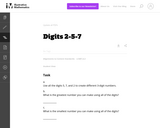
This task helps students understand the relationship between digit placement and the value of a number.

Students learn how to identify, write, and read the /ch/ sound in a fun and interactive way.
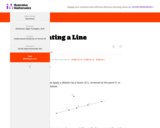
This task asks students to "Verify experimentally" that a dilation takes a line that does not pass through the center to a line parallel to the original line, and that a dilation of a line segment (whether it passes through the center or not) is longer or shorter by the scale factor.
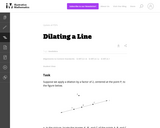
This task gives students the opportunity to verify that a dilation takes a line that does not pass through the center to a line parallel to the original line, and to verify that a dilation of a line segment (whether it passes through the center or not) is longer or shorter by the scale factor.

. This lesson covers how to do dilations on a coordinate plane. It also contains an interactive note google presenation to go along with the lesson, a photo project to help review all the different types of transformations, and exit ticket/exit ticket rubric to check students understanding of the lesson. This lesson is meant to be taught in one 70-80 minute period.

Digital Escape by finding scale factors from Dilations.
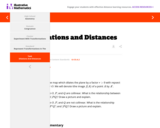
The goal of this task is to study the impact of dilations on distances between points.

This three-act math task utilizes videos and questioning to help students explore identifying multiples and relating to time.

Dimension of the Column Space or Rank. Created by Sal Khan.

Dimension of the Null Space or Nullity. Created by Sal Khan.
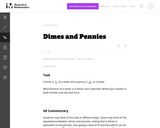
This task requires students to think of dimes and pennies as fractions of dollars.
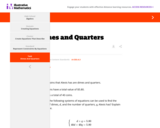
This task does not actually require that the student solve the system but that they recognize the pairs of linear equations in two variables that would be used to solve the system.

This task does not actually require that the student solve the system but that they recognize the pairs of linear equations in two variables that would be used to solve the system. This is an important step in the process of solving systems.

This lesson is written using the Launch, Explore, Summarize lesson plan format and includes a link to a chart to anticipate student strategies and monitor student strategies and thinking as they work through the problems. Tasks also include a recording sheet where applicable. They are meant to be used as ideas. Please make changes and adaptations as necessary for the students in your class. All of the ideas for the tasks in this bank are common picture book math problems or were created by UVU School of Education Faculty. If you use one of these tasks, please complete our Picture Book Task Survey so that we can learn more about your experience teaching, how students solve problems, and improve our Picture Book Task Bank.If you have any questions, comments, or concerns, please feel free to contact us at creativelearning@uvu.edu or nicole.gearing@uvu.edu.

The purpose of this task is to illustrate through an absurd example the fact that in real life quantities are reported to a certain level of accuracy, and it does not make sense to treat them as having greater accuracy.

The purpose of this Illustrative Mathematics task is to illustrate through an absurd example the fact that in real life quantities are reported to a certain level of accuracy, and it does not make sense to treat them as having greater accuracy.